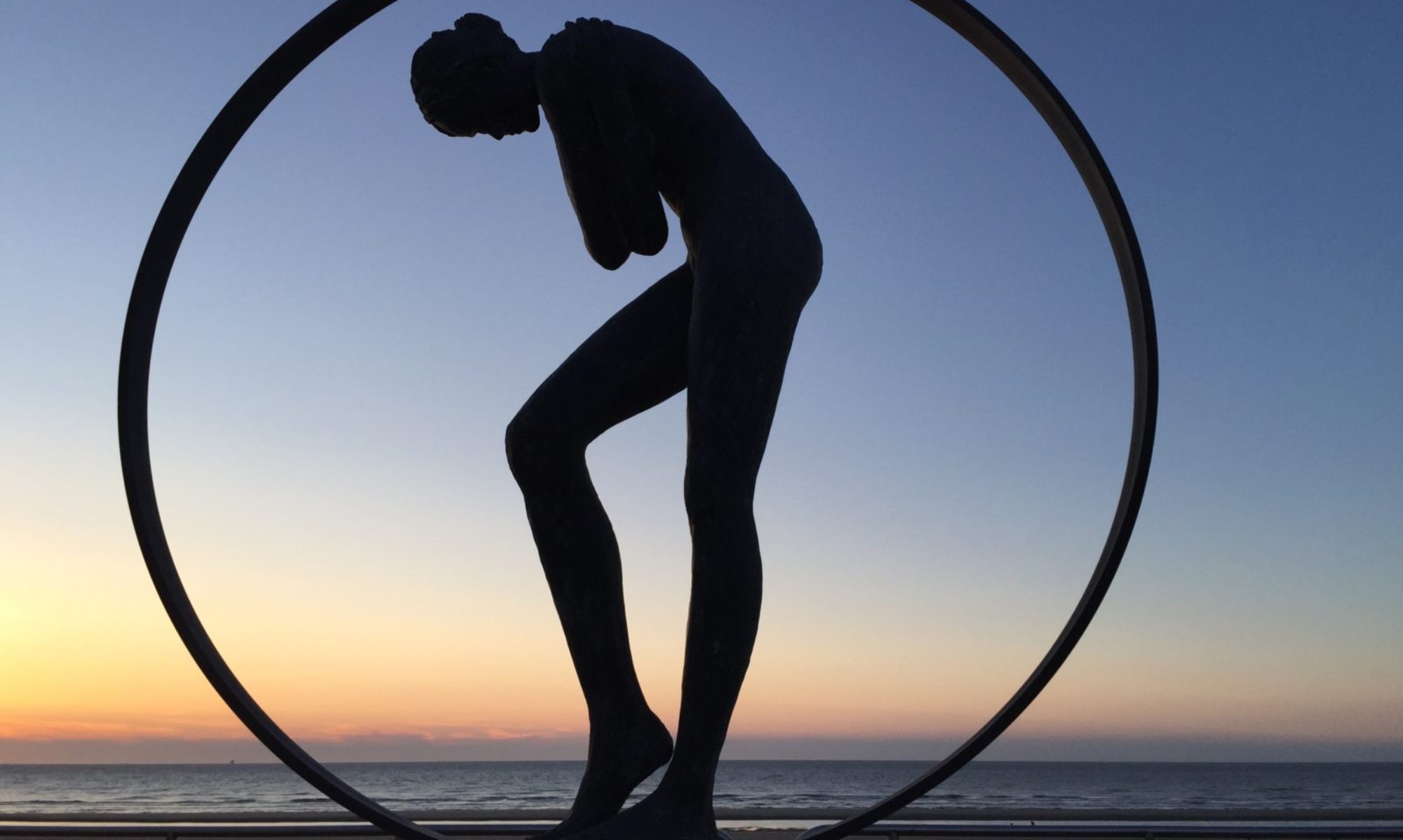The day really had a glorious beginning: my faithful Francesco the bus driver was back! Despite the half hour traffic jam, I arrived at Pompei without being sick, although a bit queasy once more. We started our trip by sitting down on a terrace and having a coffee (which I declined, my stomach was too upset) and then by queueing the entrance line. While Leon actually did that for us, we took a look at the… how can I respectfully describe this? These people were found in the ash layers, and the empty spaces in the ashes, left behind by their corpses, were filled with plaster, so we can actually make out their shapes around their skeletons. We were really stunned by this, and actually even aggravated by the children – too young to fully comprehend that these were once actual people – who were wooping and cheering at the sight.
And then we entered the site, and made our way passing by some graves, and finally entering the city.
So we wandered around, Daan holding the map, like you would wander around a modern city, deciding which places we definitely wanted to see. In the Fuller’s house we went, through the temple of Isis, climbing the steps of the theatre, and having our picknick in a shadowy grove.
After a short break we continued through the streets, marvelling at every corner, in every doorstep, at every view. I must admit, it was nothing like I expected. I was told about low structures that you could see through, only fundaments remaining, and here I was, in a complete city, the Roman spirit wafting through every doorway… I admired the baths with the hypocaustum and the bowling alley, took a long look at the mosaic of the boar…
And then, Fortuna struck…
As I was stepping down into the street, I turned around for a last look at that mosaic, not really minding my step, and… I heard a loud snap, a blinding pain, and I fell down, grasping my right ankle. I knew right away: this was a serious sprain, not just a mere twist, but nothing was broken. A guard summoned the medics, as I lay down on the pavement. And, much to my surprise, every passing guide asked how I was, if someone was alerted, if I needed anything. After a few minutes, I asked the rest of the group to continue, since this was going to take a while, and Leon stayed by my side.
The infirmiere arrived, took a quick assessment, and while I was filling out some papers, the guy took out a lot of bandages, and set to work, right there and then on the Pompei pavement. He sprayed the ankle, swaddled it in a thick layer of fluff cotton, and measured out a length of premade plaster. And yes, he made me a half cast right there on the spot. It took like a quarter of an hour to dry completely, and I was set. Alas, I couldn’t walk. So the lady fetched me a pair of crutches, and they escorted me to the exit, as neither they nor the crutches could leave the premises. And there, on the outside pavement, they left me standing, after a very good, swift and free treatment.
Luckily there still was Leon to take care of me, so he helped me cross the street and onto a terrace chair, and we ordered a coffee. I do admit, at that very moment I started crying. The pain, the exhaustion of having to walk that way and all those steps with crutches, and the mere misery of it all. No more Pompei for me, and probably a couple of weeks immobility. And I definitely need to go to work, this close to the exams. And I need to get home too, through the airport and all. Oh well…
Leon called Mina at the Villa, and she would go out and fetch me a pair of crutches; he also went to the ATM for me and got me some extra money, and the bus would come and pick me up on the spot.
So I sat there, being pretty miserable, on the terrace outside Pompei Scavi. There was this guy prancing about, dressed up like a praetorian, making money out of tourists who wanted a picture with him. He came up to me at one point, asking me what had happened. I explained, and he said that he was a gladiator. So I laughed, and said he was not, he was an officer in the army. He looked very alarmed, mockingly, and said that I should hush up! Of course he was a praetorian, but the people don’t know that, and they preferred a gladiator. Anyway, this guy really made me laugh, and I needed that. He even made me take a selfie ^^
Later on, he came back and attached a trinket to my big toe, “a good luck charm” he said. And then he was gone before I even could thank him. So sweet…
Anyway, we got home, I went to lie down, and gradually I did feel better. Everyone was so nice and so concerned…




























































































